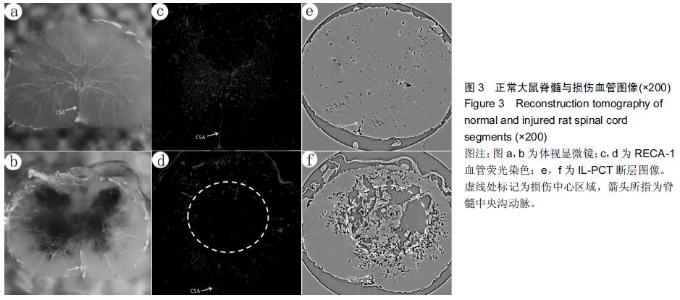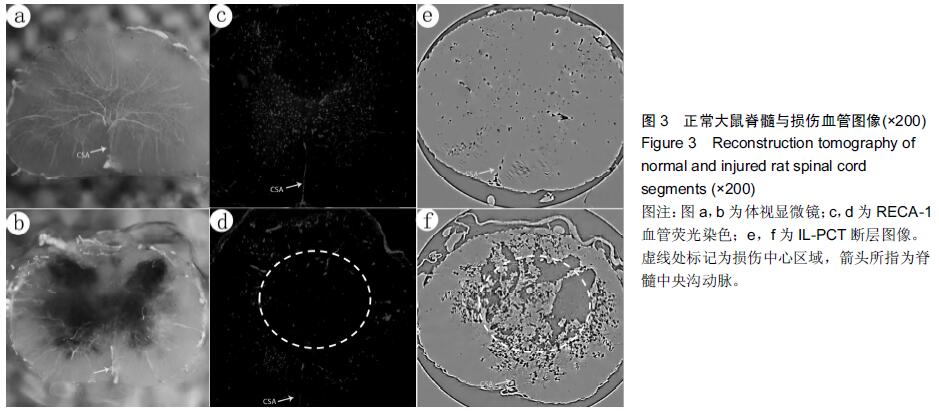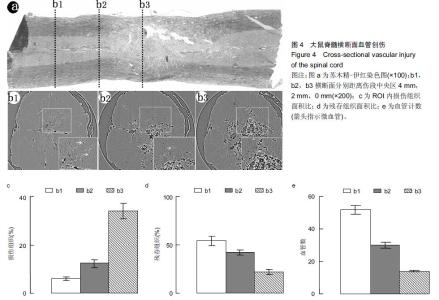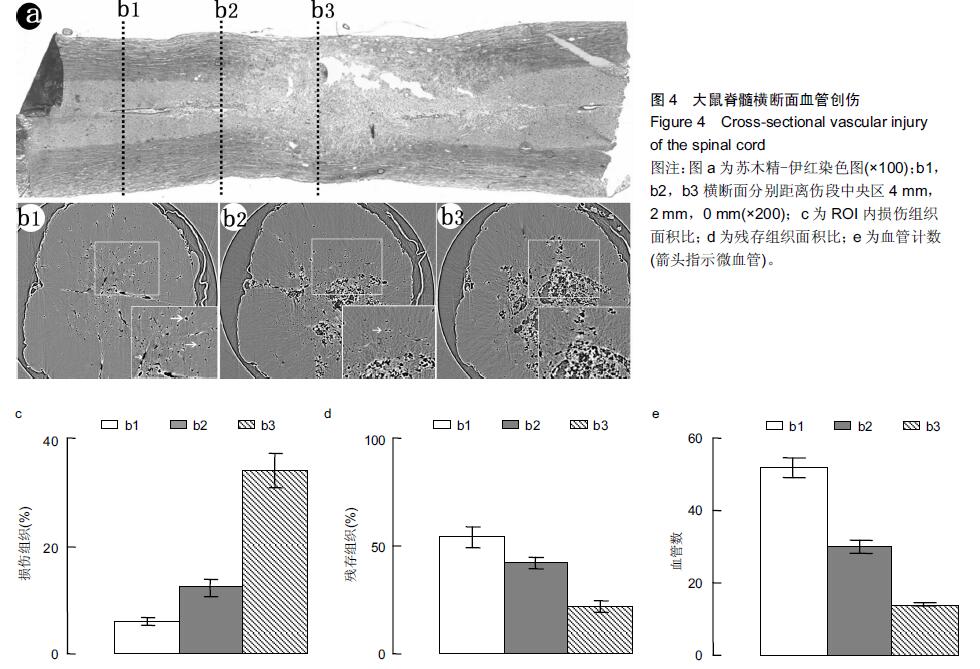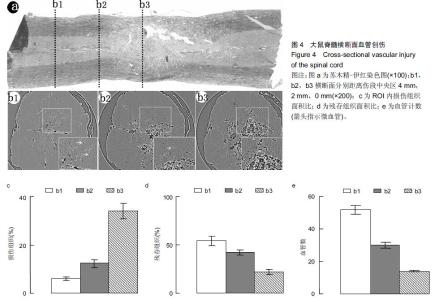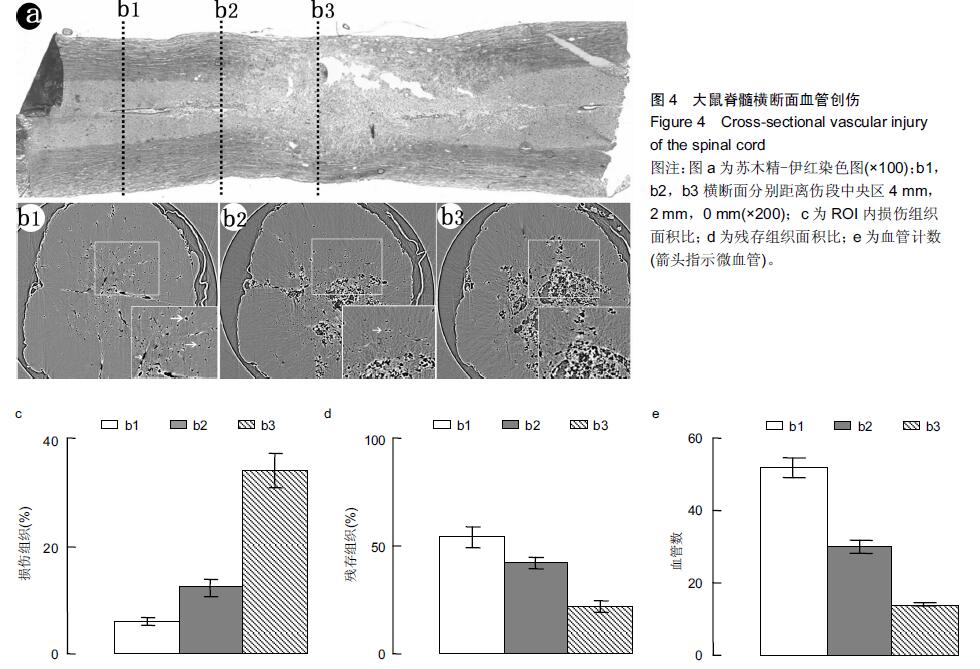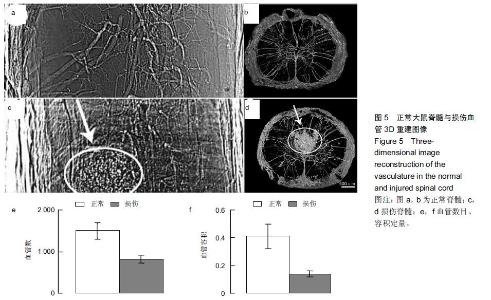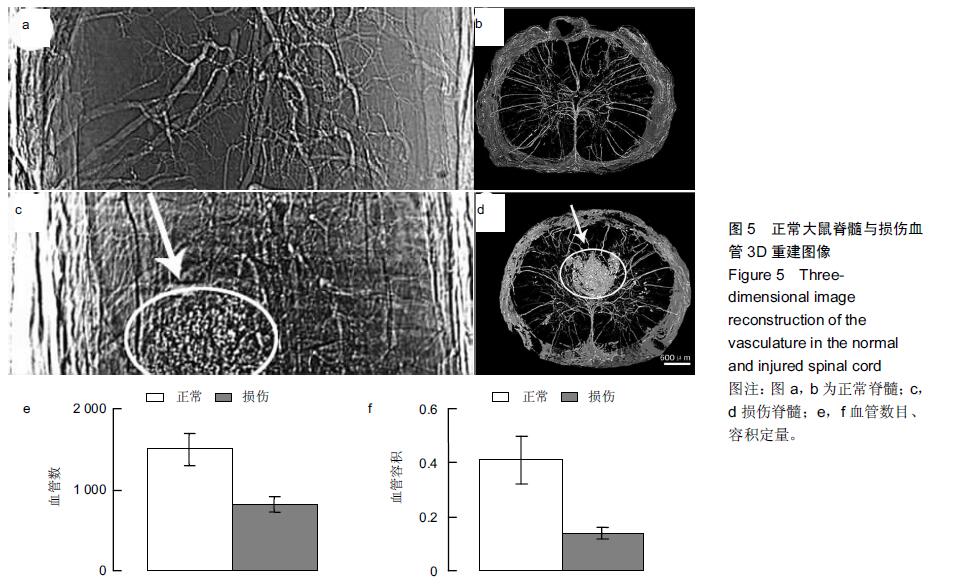| [1] Tator CH, Fehlings MG.Review of the secondary injury theory of acute spinal cord trauma with emphysis on vascular mechanisms. J Neurosurg.1991;75(1):15-26.
[2] Ashabi G, Ramin M, Azizi P, et al. ERK and p38 inhibitors attenuate memory deficits and increase CREB phosphorylation and PGC-1α levels in Aβ-injected rats. Behav Brain Res.2012;232(1):165-173.
[3] Pries AR, Secomb TW, Gaehtgens P. Structural adaptation and stability of microvascular networks: theory and simulations. Am J Physiol Heart Circ Physiol. 1998;275 (2): 349-360.
[4] Pries AR, Reglin B, Secomb TW. Structural adaptation of microvascular networks: functional roles of adaptive responses. Am J Physiol Heart Circ Physiol.2001; 281: 1015-1025.
[5] Hu JZ, Wu TD, Zeng L, et al. Visualization of microvasculature by X-ray in-line phase contrast imging in rat spinal cord. Phys Med Biol.2012;57:55-63.
[6] Hwu Y, Tsai WL, Chang H M, et al. Imaging cells and tissues with refractive index radiology. Biophys J.2004;87(6): 4180-4187.
[7] Zhou SA, Brahme A. Development of phase-contrast X-ray imaging techniques and potential medical applications. Phys Med.2008;24(3):129-148.
[8] Allen AR.Surgery of experimental lesion of spinal cord equivalent to crush injury of fracture dislocation of spinal column:a preliminary report.Am Med Assoc.1911;57: 878–880.
[9] Tsai PS, Kaufhold JP, Blinder P,et al.Correlations of neuronal and microvascular densities in murine cortex revealed by direct counting and colocalization of nuclei and vessels. J Neurosci.2009;29:14553–14570.
[10] Casella GT, Marcillo A, Bunge MB,et al. New vascular tissue rapidly replaces neural parenchyma and vessels destroyed by a contusion injury to the rat spinal cord. Exp Neurol.2002;173: 63-76.
[11] Zhang X, Liu XS, Yang XR,et al. Mouse blood vessel imaging by in-line x-ray phase-contrast imaging. Phys Med Biol.2008; 53(20): 5735-5743.
[12] YZ Zhao, Emmanuel Brun, Paola Coan, et al. High-resolution,low-dose phase contrast X-ray tomography for 3D diagnosis of human breast cancers. Proc Natl Acad Sci USA.2012 Nov6;109(45):18290-18294.
[13] MQ Zhang, L Zhou, QF Deng,et al.Ultra-high-resolution 3D digitalized imaging of the cerebral angioarchitecture in rats using synchrotron radiation. Sci Rep. 2015;5:14982.
[14] Karellas A, Vedantham S.Breast cancer imaging: a perspective for the next decade. Med Phys.2008; 35(11): 4878-4897.
[15] Martirosyan NL,Feuerstein JS,Theodore N,et al.Blood supply and vascular reactivity of the spinal cord under normal and pathological conditions.J Neurosurg Spine.2011;15(3): 238-251. |


